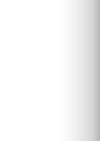


Siamak B, Salarpouri A, Darvishi M, Akbarzadeh Chamachaei G A, pourmozaffar S, gozari M et al . Estimating standing stock size of Reef and Ornamental fishes in Larak Island, the Persian Gulf. JFST 2020; 9 (1) :31-37
URL:
http://jfst.modares.ac.ir/article-6-42967-en.html
1- Persian Gulf and Oman Sea Ecology Research Center, Agricultural Research Education and Extension Organization (AREEO), Iranian Fisheries Sciences Research Institute, Bandar Abbas, Iran , siamakbehzady@gmail.com
2- Persian Gulf and Oman Sea Ecology Research Center, Agricultural Research Education and Extension Organization (AREEO), Iranian Fisheries Sciences Research Institute, Bandar Abbas, Iran.
3- Persian Gulf Mollusks Research Station, Agricultural Research Education and Extension Organization (AREEO), Iranian Fisheries Sciences Research Institute, Bandar-e-Lengeh, Iran.
Abstract: (3612 Views)
Aims: Monitoring of the fish biomass is one of the basic principal of fisheries management, but ornamental and reef fish stocks, because of difficulty of estimating their abundance, have been less studied than others. The aim of this study was to estimate the standing biomass of ornamental and reef fishes in Larak Island, in the Strait of Hormuz.
Materials &Methods: Standing biomass of the fish species was assessed seasonally using Underwater Visual Census Method (UVCm) in coral reefs and mesophotic coral reefs in Larak Island throughout 2018 and 2019. Two popular methods in UVCm (belt transect and stationary point) were used based on topography of sea bottom. The confidence interval of estimated standing biomass is calculated using bootstrapping method.
Findings: The standing biomass of ornamental and reef fishes is estimated as 2522.18, 5222.17 and 1325.15(Kg.) in Site 1, Site 2 and Site 3, that are located in 3-15meters depth. The standing biomass at Site 4, was estimated as 884.13kg. The minimum were observed in summer, also the result showed that the standing biomass in summer was significantly lower than other seasons (P <0.05). In addition, the temporal diagnostic test showed that population structure of fish in the spring, autumn, and winter seasons was similar but significantly different from the population structure in summer.
Conclusion: The less of standing biomass in summer season can be affected by seasonal migrations of fish in tropical and subtropical waters to deeper waters, in order to trade of the stresses caused by temperature fluctuations.
Article Type:
Original Research |
Subject:
Fisheries Extension & Stock assessment Received: 2020/05/17 | Published: 2020/01/1
Send email to the article author

























 1, Ali Salarpouri2
1, Ali Salarpouri2 
 , Mohammad Darvishi2
, Mohammad Darvishi2 
 , Gholam Ali Akbarzadeh Chamachaei2
, Gholam Ali Akbarzadeh Chamachaei2 
 , Sajjad Pourmozaffar3
, Sajjad Pourmozaffar3 
 , Mohsen Gozari2
, Mohsen Gozari2 
 , Mohammad Momni2
, Mohammad Momni2 

